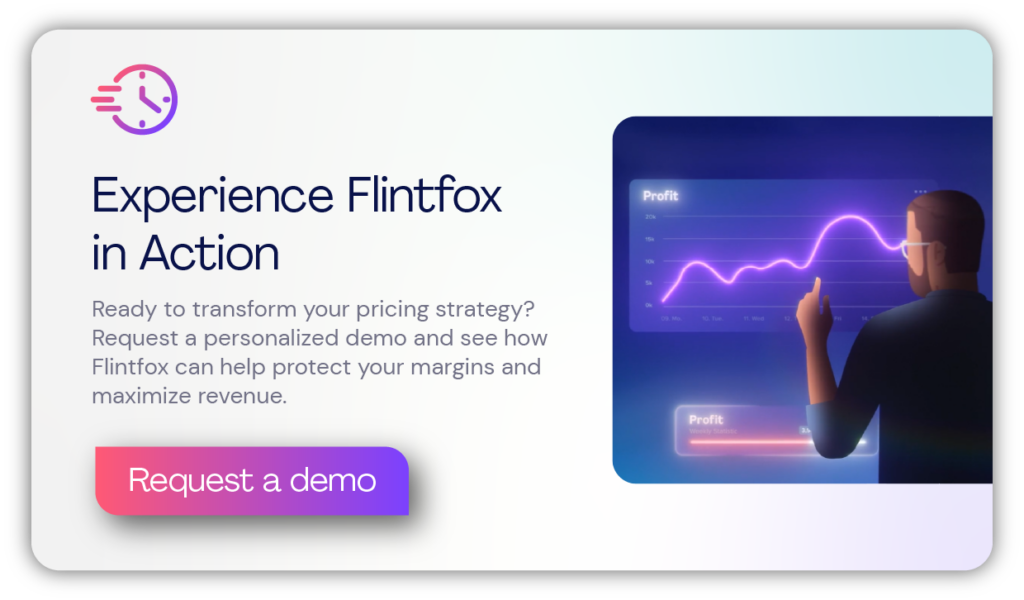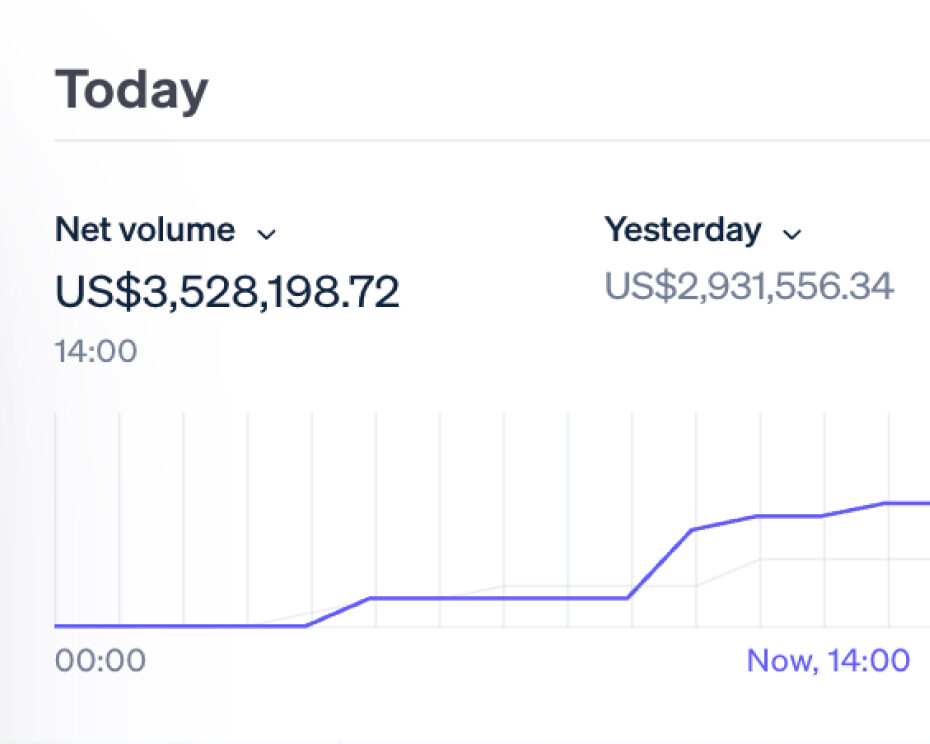Cost-Based Pricing Strategy Advantages & Disadvantages
What is cost-based pricing?
Companies use cost-based pricing to determine the selling price of a product or service by calculating the cost of production and then adding a markup percentage to create a profit margin. Unlike a value-based pricing strategy, cost-based pricing doesn’t consider factors like customer perceived value or levels of consumer demand. The cost-based pricing method is popular because it’s simple to calculate and guarantees the business will profit on unit sales.
Table of Contents
- Cost-based pricing example
- Types of cost-based pricing
- What are the advantages of cost-based pricing?
- What are the disadvantages of cost-based pricing?
- Companies that adopt a cost-based pricing strategy
- Cost-based pricing versus value-based pricing
- How to manage cost-based pricing the smart way
Cost-based pricing example
Companies can calculate the selling price of a product using cost-based pricing by adding the cost of production to the profit percentage. For example, if a company makes Televisions, it may calculate cost-based pricing as follows.
| Item | Cost |
| Materials | $250 |
| Labor | $200 |
| Production | $250 |
| Packaging | $15 |
| Marketing | $100 |
| Shipping Costs | $10 |
| Total Costs | $825 |
| Markup | 40% |
| Sale Price | $1,155 |
| Profit Margin | $330 |
Types of cost-based pricing
There are three main types of cost-based pricing.
1. Cost-plus pricing
Also known as a markup pricing strategy, the cost-plus pricing formula adds a fixed percentage to production costs to create the final selling price and profit margin. For example, when creating a dress, a clothing retailer incurs numerous costs, including materials, labor, manufacturing, packaging, delivery, plus overhead costs. With cost-plus pricing strategies, they tally up the total cost to produce and deliver the dress, then add a percentage on top to create the profit margin.
2. Break-even pricing
When a company adopts break-even pricing, it sets the selling price of its products or services to cover its costs without making a profit or loss. Companies may conduct a break-even analysis to calculate the break-even point (BEP). This is found by dividing the fixed costs by the volume and adding the variable costs. Calculating break-even pricing can be useful when conducting business planning, so companies know the absolute lowest price they can charge without making a loss.
A break-even pricing strategy can help gain market share with price-conscious consumers and generate economies of scale, but it can lead to low-value perceptions and reduced profits in the long term.
3. Target profit pricing
Target profit pricing allows companies to establish how many units must be sold over a specific period to reach a target profit number. Also known as target profit analysis, this pricing method starts with the desired profit and works back, deducting costs and determining how many items must be sold at what selling price to reach this target.
What are the advantages of cost-based pricing?
There’s a reason why so many companies still choose to use this tried and tested pricing strategy. Let’s look at some of the benefits of using a cost-based pricing model.
1. Simple to calculate and understand
Cost-based pricing is probably the simplest pricing strategy available. Unlike competitive pricing or value-based pricing, cost-based pricing uses readily available data. Companies don’t need to conduct market or customer research to use cost-based pricing strategies — they only need the costs of producing the product or service.
2. Predictable and profitable
Cost-based pricing is also highly predictable. While production costs can fluctuate over time, companies can adjust their retail price to reflect this, ensuring they always maintain the same profit percentage. Cost-plus pricing also ensures a company never sells a product for a loss.
3. Price transparency
No customer welcomes a price increase, but companies that use cost-based pricing find it easier to defend price hikes due to the transparency of this pricing model. A recent Label Insight study by Neilson IQ found that up to 94 percent of consumers surveyed were more likely to be loyal to a brand that offers transparency. With cost-based pricing, companies can provide a logical narrative to customers when the cost of production increases, including things like materials, labor, and shipping.

What are the disadvantages of cost-based pricing?
Despite cost-based pricing’s popularity, there are several reasons why companies shouldn’t rely on this pricing strategy alone.
1. Unrealized profit margins
When companies use cost-based pricing strategies, they risk underpricing their products or services. Unlike value-based pricing, which considers how much customers are willing to pay for a product based on their perception of value, cost-based pricing simply adds a markup percentage to production costs. For this reason, cost-based pricing may not be the best pricing model for businesses that sell particularly unique or in-demand products that could command a higher price.
2. Lack of competitiveness
Cost-based pricing may also make companies uncompetitive by overpricing their products. Understanding where your products or services sit in relation to your competitors is essential, regardless of which type of pricing strategy you use. Companies might use a competitive pricing strategy to gain market share. In contrast, cost-based pricing strategies assume that costs remain fixed over time, regardless of what the market is doing.
3. Inefficiency
Companies that rely purely on cost-based pricing run the risk of becoming complacent. Because cost-based pricing ignores customer demand, competitors, and sales volumes, businesses may be unmotivated to reduce costs or make the production process more efficient.
Companies that adopt a cost-based pricing strategy
Cost-based pricing is widely used in the manufacturing industry because the costs of production — raw materials, machinery, and labor — are relatively fixed. Service providers, like hairdressers or domestic cleaners, may also use a cost-based pricing strategy, considering the cost of materials and labor and adding a markup to create a profit margin.
Cost-based pricing versus value-based pricing
Cost-based pricing and value-based pricing are like night and day. Where cost-based pricing simply considers the cost of production and adds a markup, value-based pricing takes a deep dive into the level of customer demand, perception of value, and the benefits offered.
For example, the cost of developing and maintaining marketing software may be far less than the value gained by the customer. The software may save them countless hours of manual work and boost sales significantly. In this case, the customer perceives the product’s value to be exceptionally high and is prepared to pay, regardless of how much it costs the developer to create.
How to manage cost-based pricing the smart way
Regardless of which pricing strategy you choose, cost-based pricing will likely form part of your model. At the very least, you need to understand your break-even price to be profitable. But how can you stay on top of your production cost and update prices in real-time? Flintfox is the answer.
There is no pricing structure too complex for our intelligent Pricing Engine. Flintfox integrates seamlessly with your existing ERP, so you can say bye-bye to spreadsheets (and headaches) and hello to profits. Get in touch with our team today to find out how we can supercharge your pricing.
Powerful pricing software supported with deep experience
Flintfox gives you flexibility with your application, unprecedented speed and power from our pricing engine and support from our dedicated team.
